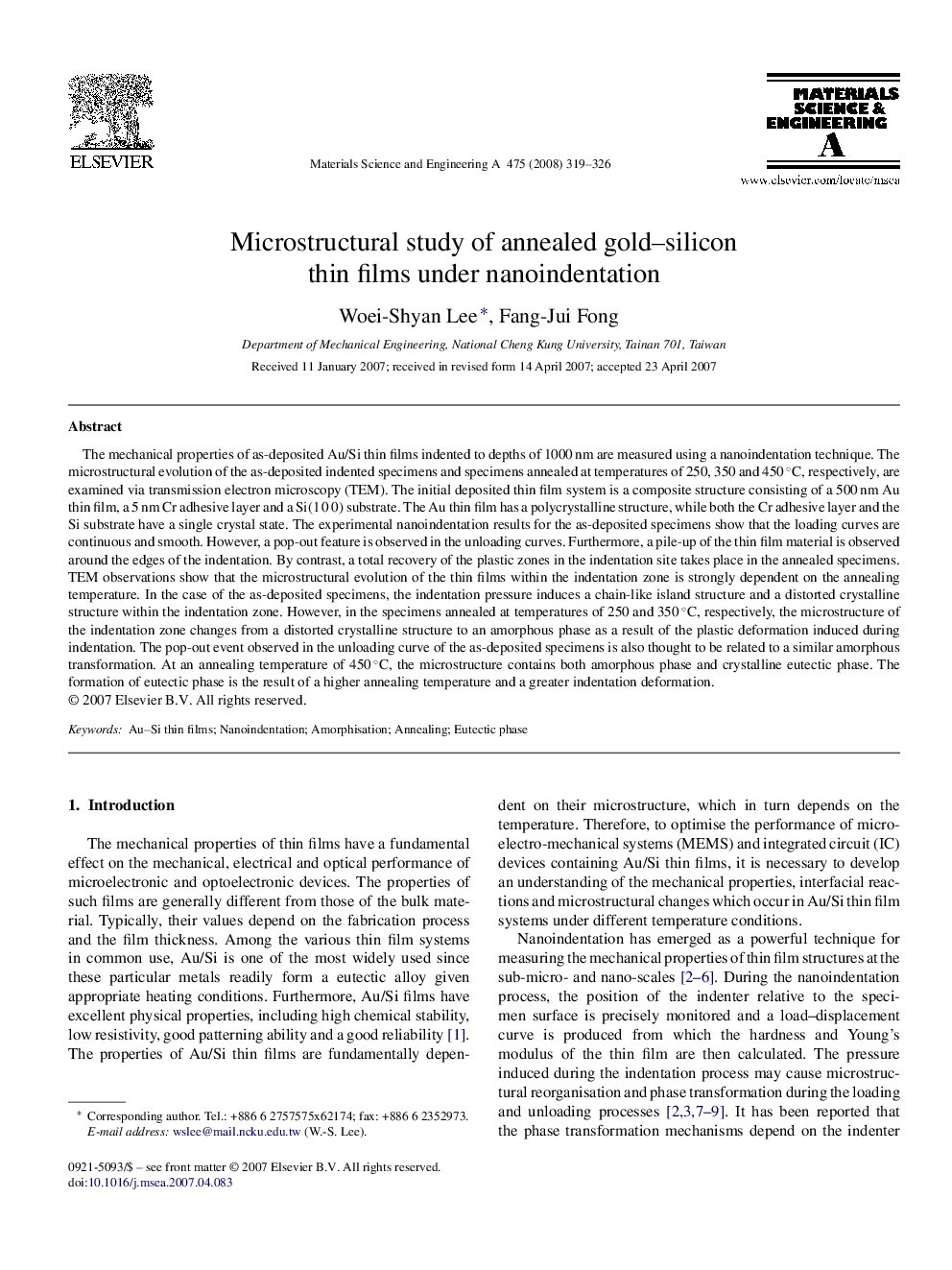| Article ID | Journal | Published Year | Pages | File Type |
|---|---|---|---|---|
| 1583090 | Materials Science and Engineering: A | 2008 | 8 Pages |
Abstract
The mechanical properties of as-deposited Au/Si thin films indented to depths of 1000 nm are measured using a nanoindentation technique. The microstructural evolution of the as-deposited indented specimens and specimens annealed at temperatures of 250, 350 and 450 °C, respectively, are examined via transmission electron microscopy (TEM). The initial deposited thin film system is a composite structure consisting of a 500 nm Au thin film, a 5 nm Cr adhesive layer and a Si(1 0 0) substrate. The Au thin film has a polycrystalline structure, while both the Cr adhesive layer and the Si substrate have a single crystal state. The experimental nanoindentation results for the as-deposited specimens show that the loading curves are continuous and smooth. However, a pop-out feature is observed in the unloading curves. Furthermore, a pile-up of the thin film material is observed around the edges of the indentation. By contrast, a total recovery of the plastic zones in the indentation site takes place in the annealed specimens. TEM observations show that the microstructural evolution of the thin films within the indentation zone is strongly dependent on the annealing temperature. In the case of the as-deposited specimens, the indentation pressure induces a chain-like island structure and a distorted crystalline structure within the indentation zone. However, in the specimens annealed at temperatures of 250 and 350 °C, respectively, the microstructure of the indentation zone changes from a distorted crystalline structure to an amorphous phase as a result of the plastic deformation induced during indentation. The pop-out event observed in the unloading curve of the as-deposited specimens is also thought to be related to a similar amorphous transformation. At an annealing temperature of 450 °C, the microstructure contains both amorphous phase and crystalline eutectic phase. The formation of eutectic phase is the result of a higher annealing temperature and a greater indentation deformation.
Related Topics
Physical Sciences and Engineering
Materials Science
Materials Science (General)
Authors
Woei-Shyan Lee, Fang-Jui Fong,
